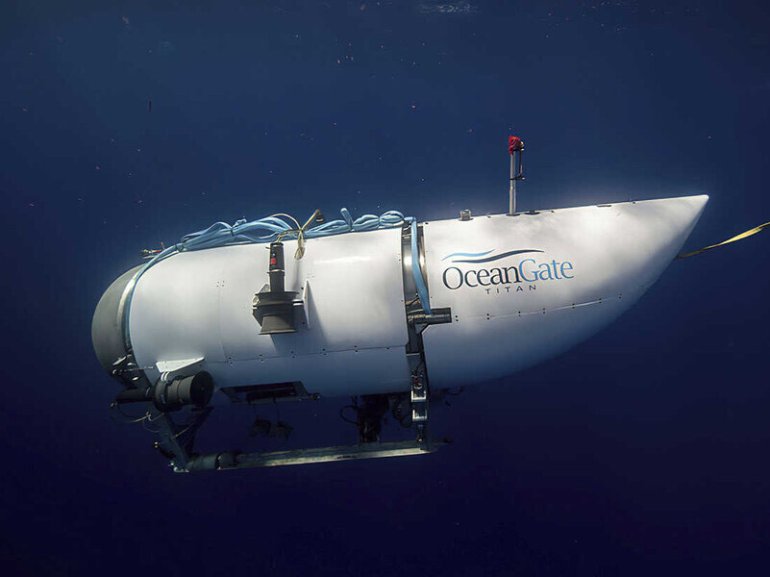Sponsored: OceanGate Titan tragedy: the significance of third-party certification

SPONSORED CONTENT
The OceanGate Titan tragedy, in which a submersible operated by American tourism and expeditions company OceanGate imploded during an expedition to view the wreck of the Titanic in the North Atlantic Ocean off the coast of Newfoundland, Canada, killing all five on board, highlighted the importance of third-party certification in ensuring safety and quality standards. Adexon explores the role of third-party certification in mitigating risks and reducing the probability of such incidents and emphasises the need for external inspection and certification to prioritise safety over commercial interests.
The role of probability in risk assessment
Probability plays a crucial role in assessing the risks associated with any product or activity. When considering the probability of failure in the risk formula, it follows that a higher number of successful outcomes brings a failure closer rather than farther away. To illustrate this point, take the analogy of a bag of marbles; there are 4 red marbles and 1 blue marble. After picking 4 red marbles out of the bag, it is definite that your next marble will be blue. Translating this analogy to the risk of failure of an operation, if the probability of failure is 20%, after 4 consecutive successful operations, the next operation has to fail (if the probability of failure is indeed 20%).
This highlights the importance of probability. Unless the probability of failure is known for each element in a system, it is impossible to calculate the probability of overall system failure with adequate certainty. This means agreeing a level of risk that is acceptable is not possible, neither can further overall risk mitigation be controlled.
Equally critical are controlled processes and production such as those verified through Factory Production Control (FPC) audits, part of third-party certification. There really is no substitute for external assessments in ensuring probability is accurate and manufacturing tolerances don’t wander.
Third-party certification and mitigating probability of failure
Third-party certification acts as a mitigating factor in assessing probability by involving independent certification bodies rather than relying solely on the claims of inventors or manufacturers. In the absence of third-party certification, production and quality control are solely managed by the profit-driven manufacturer, without external scrutiny. This raises a crucial question: What takes precedence, commercial interests, or safety? Neither comes first, but rather a sequence of "safety-by-my-standards," followed by "commercial interest," and finally "safety-as-an-independent-sees-it." It is important to acknowledge that different individuals may have varying standards, and this is where third-party certification proves invaluable.
Value of third-party certification in preserving lives
The value of third-party certification can be measured in terms of lives saved rather than monetary gains. It ensures that production aligns with established industry benchmarks for safety and quality.
While there may always be a few bad actors, they are exceptions rather than the norm. Even in the presence of such actors, the presence of third-party certification remains superior to the absence of certification altogether. It is important to note that third-party certification does not eradicate risk, but rather, it significantly contributes to assessing the safety and reliability of a product, and ensuring the probability number is controlled. The value of this cannot be overstated when considering products that lives depend on.
The need for transparency and certainty
Innovation should be celebrated, but when it comes to life-safety products, caution should take precedence over expediency. While third-party certification may slow down the innovation process, avoiding unnecessary risks and preventing avoidable loss of lives is far more crucial. An uncertified product may indeed possess the same level of safety as a third-party certified product, but the crucial difference lies in the certainty of the probability of failure. With third-party certification, the probability of failure is controlled, whilst, without it, commercially controlled production can be uncertain.
Understanding the compound effect of probabilities
When evaluating probabilities, it’s crucial to understand how they can compound or multiply when dealing with interconnected elements. Consider a system consisting of five vital components, each having a relatively conservative 10% chance of failing. At first glance, this might seem like an acceptable level of probability. However, when we take into account how these probabilities interact with each other, the scenario changes significantly.
When we calculate the compounded risk of these interdependent components, we find that the likelihood of the entire system failing reaches a startling 50% (resulting from multiplying 5 by 10%). This high probability of system failure is clearly unacceptable in many critical situations.
Suppose we replace these components with new ones, each having a lower 5% chance of failure. In this case, the overall probability of the system failing drops significantly to just 25% (the result of multiplying 5 by 5%). This demonstrates a straightforward yet effective risk mitigation strategy.
This principle of understanding how probabilities compound can be applied to a wide range of situations, including critical areas like fire safety, where the consequences of failure can be life-threatening.
Fire curtains and the role of third-party certification
Applying these principles to fire curtains, it is clear to see why industry leaders have long advocated for third-party certification being a mandatory requirement. The valid third-party certification statuses for various product standards used in the UK are:
BS EN 16034: Third-party certification available
BS 8524-1: No valid third-party certification available
ISO 21524: Third-party certification available
When considering various configurations of fire curtains, it is crucial to highlight the specific product standards as these have valid third-party certification. The following standards are the only ones that have valid third-party certification for each of the different fire curtain configurations:
Vertical fire curtains: BS EN 16034
Horizontal fire curtains: ISO 21524
Concertina fire curtains: BS EN 16034
By adhering to these certified product standards, organisations can ensure the highest level of safety and quality for fire curtains in their respective configurations.
A poignant reminder
In conclusion, the OceanGate Titan tragedy serves as a poignant reminder of the significance of third-party certification. It emphasises the need for external inspection, transparency, and certainty in ensuring safety and quality standards. The value of third-party certification lies in preserving lives and mitigating risks. By understanding the compound effect of probabilities and prioritising safety over commercial interests, we can strive for a safer future.







